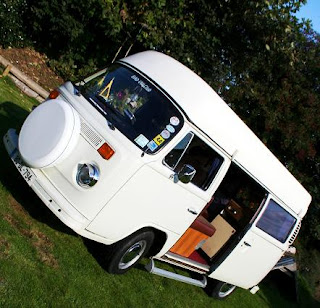





Volkswagen made the first campervans in 1950. They were an instant hit and have remained popular and sought after vehicles ever since. Most owners are passionate about their vans and Alan Dean from Redcastle is no exception. Alan and his family like nothing more than to jump into their 1980 Viking Conversion model and head off into the sunset as often as possible.
How long have you had the campervan?
About ten years. I was looking for any type of campervan initially, but found most of them too large. I found this one behind a garage with grass growing all around it and saw the potential straight away. The van was in a bit of a mess as it had been laid up for over three years but the chassis was still in good condition.
Any plans to change?
This van is now a family heirloom.
Is it reliable?
Yes. I go for preventative maintenance and fix anything that isn’t 100%. If anything unforeseen does go wrong with these VW vans you can usually get them going again with a stick and a piece of string!
Best thing about the campervan?
The journey is as enjoyable as the destination. We have no rush to get anywhere because we already have our accommodation with us.
What would you do to help motorists given the chance?
I would give everyone a Volkswagen campervan attitude. There would be far less rage on the roads!
What would you really like to be driving around in?
A 1959 split screen VW with a 1959 Lambretta LI 150cc scooter attached to the back. I choose the 1959 models for no other reason than it was the year I was born.
Have you done much refurbishment to the van?
It was resprayed eight years ago and had a new 1.6 engine fitted more recently. I also put in a quick shift gearbox. The engine is at the back so the gear linkage has a long way to travel from the cabin. The old gear stick reminded me of stirring porridge.
Any plans for the future?
In a couple of years the van will get a complete back to the bone strip down and rebuild. I will re-customise the interior as well. I will also convert the engine to LPG. When you own a vehicle such as this you are always working on it!
Do you get lost when you are on your travels?
We never get lost. There are two ways of travelling, the long way and the short way. We choose the long way. I never go on the same road twice which adds to the fun!
How long have you had the campervan?
About ten years. I was looking for any type of campervan initially, but found most of them too large. I found this one behind a garage with grass growing all around it and saw the potential straight away. The van was in a bit of a mess as it had been laid up for over three years but the chassis was still in good condition.
Any plans to change?
This van is now a family heirloom.
Is it reliable?
Yes. I go for preventative maintenance and fix anything that isn’t 100%. If anything unforeseen does go wrong with these VW vans you can usually get them going again with a stick and a piece of string!
Best thing about the campervan?
The journey is as enjoyable as the destination. We have no rush to get anywhere because we already have our accommodation with us.
What would you do to help motorists given the chance?
I would give everyone a Volkswagen campervan attitude. There would be far less rage on the roads!
What would you really like to be driving around in?
A 1959 split screen VW with a 1959 Lambretta LI 150cc scooter attached to the back. I choose the 1959 models for no other reason than it was the year I was born.
Have you done much refurbishment to the van?
It was resprayed eight years ago and had a new 1.6 engine fitted more recently. I also put in a quick shift gearbox. The engine is at the back so the gear linkage has a long way to travel from the cabin. The old gear stick reminded me of stirring porridge.
Any plans for the future?
In a couple of years the van will get a complete back to the bone strip down and rebuild. I will re-customise the interior as well. I will also convert the engine to LPG. When you own a vehicle such as this you are always working on it!
Do you get lost when you are on your travels?
We never get lost. There are two ways of travelling, the long way and the short way. We choose the long way. I never go on the same road twice which adds to the fun!
Alan is a member of the Born Again Dubbers (BAD) VW club. It is free to join and welcomes owners of all Volkswagen models. Alan would be interested in hearing from anyone who has an old VW campervan that is gathering dust. Give me a ring on 086 401 2755 and I will pass on your details.
Motoring.


